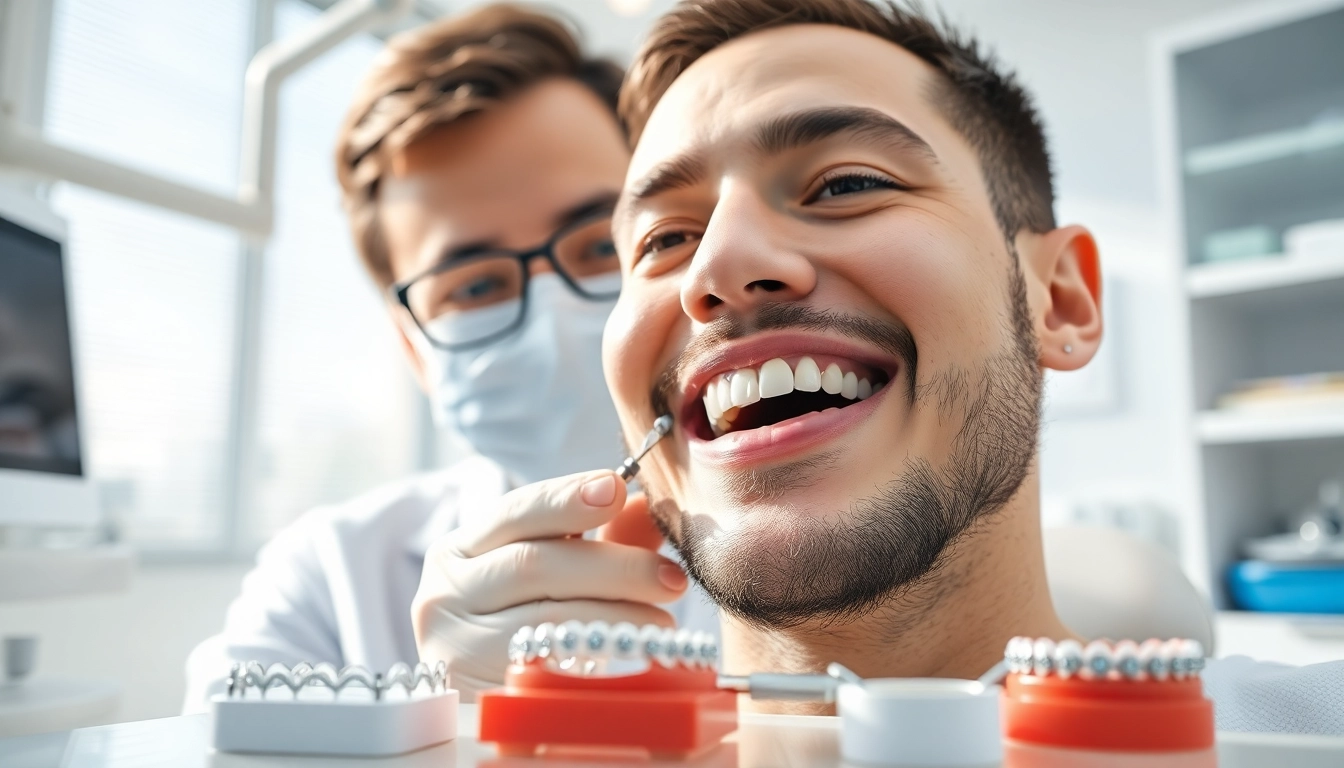Understanding Braces Cost Myrtle Beach: A Comprehensive Guide
When considering orthodontic treatment, one of the primary concerns for many individuals is the cost associated with braces. In Myrtle Beach, the braces cost Myrtle Beach can vary widely based on a variety of factors. This guide aims to break down the expected costs for different types of braces, additional expenses to consider, and insights on how to choose the right orthodontist for your needs.
Overview of Braces Cost Myrtle Beach
What to Expect in Pricing
The cost of braces in Myrtle Beach typically ranges from $3,000 to over $8,000, depending on the type of braces chosen and the specifics of the treatment plan. Traditional metal braces might cost less compared to newer technology like Invisalign, which tends to be on the higher end of the price spectrum. It’s crucial for potential patients to understand that while initial prices may seem intimidating, many factors can influence overall costs, making it important to consult with a local orthodontist.
Factors Influencing Costs
Several factors can influence the cost of braces in Myrtle Beach:
- Type of Braces: Different types of braces, such as metal, ceramic, lingual, and clear aligners, come with varying price tags.
- Duration of Treatment: The length of time required to achieve the desired results can also affect overall costs. Typically, treatments that last longer tend to be more expensive.
- Orthodontist’s Expertise: More experienced orthodontists may charge higher fees due to their reputation and success rates.
- Geographic Location: Costs might vary based on the geographical area; urban centers often have higher prices than suburban or rural areas.
- Insurance Coverage: Your insurance plan may cover a portion of orthodontic treatment, which can significantly impact out-of-pocket expenses.
Comparing Types of Braces
When choosing braces, it’s essential to understand the different options available and their respective costs:
1. Traditional Metal Braces
These are the most common type of braces, often favored for their effectiveness and affordability. The average cost ranges from $3,000 to $7,000.
2. Ceramic Braces
Ceramic braces are less noticeable than metal ones, making them a popular choice among adults and teens. They are typically priced higher than metal braces, with costs ranging from $4,000 to $8,000.
3. Lingual Braces
Lingual braces are custom-made and placed on the back of the teeth, making them virtually invisible. However, this unique positioning often results in higher costs, usually between $8,000 and $10,000.
4. Invisalign and Clear Aligners
Invisalign is a popular clear aligner system that offers a more aesthetic alternative to traditional braces. The average cost varies from $3,500 to $8,000, depending on the complexity of the case.
Average Cost Breakdown
Traditional Metal vs. Ceramic Braces
While traditional metal braces typically align with a $3,000 to $7,000 cost range, ceramic braces present an aesthetic alternative with costs generally starting at $4,000. Patients should consider their budget, as well as the cosmetic benefits that ceramic braces offer when making a decision.
Invisalign and Clear Aligners
Invisalign treatment is often marketed as a more comfortable and discreet approach to teeth straightening. With costs generally ranging from $3,500 to $8,000, it’s crucial for prospective patients to evaluate whether the convenience and aesthetics of clear aligners justify the higher price tag compared to traditional braces.
Payment Plans and Insurance Coverage
Many orthodontic practices offer flexible payment plans to make braces more accessible. This can include monthly payment options and financing. Additionally, checking with insurance providers can uncover potential coverage for orthodontic treatments, which can help offset some of the costs associated with braces.
Additional Costs to Consider
Initial Consultation Fees
It’s common for orthodontists to charge a fee for the initial consultation, which can range from free to several hundred dollars. This consultation typically includes an examination, X-rays, and a discussion of treatment options, making it a valuable investment in understanding your orthodontic needs.
Maintenance and Follow-Up Visits
Regular check-ups are necessary throughout the treatment period to ensure the braces are working as intended. Maintenance appointments may incur additional costs, although many practices bundle these fees into the overall cost of the braces, allowing for easier budgeting.
Potential Hidden Costs
Patients should prepare for possible hidden costs, including:
- Emergency Visits: If braces break or wires have issues, emergency visits may lead to extra charges.
- Retainers: Post-treatment retainers are often necessary to maintain results and may not be included in the original braces cost.
- Specialized Treatments: Certain treatments or procedures required during the orthodontic process (e.g., tooth extraction) may not be covered under the standard braces cost.
Choosing the Right Orthodontist
Evaluating Credentials and Experience
When selecting an orthodontist, consider their credentials, including education and residency training. Look for orthodontists who are board-certified, as this indicates they meet the highest standards in orthodontic care.
Importance of Patient Reviews
Researching patient reviews and testimonials can provide insight into the experiences of others with the orthodontist. Look for feedback on treatment quality, customer service, and overall satisfaction to help inform your decision.
Questions to Ask During Consultation
During your initial consultation, ask specific questions about:
- The total estimate for treatment
- Financing options and payment plans
- The length of the treatment plan
- Post-treatment care and retainers
- Office hours and availability for emergencies
Maintaining Your Investment in Orthodontic Care
Oral Hygiene Practices with Braces
Maintaining excellent oral hygiene is crucial while wearing braces. Regular brushing, flossing, and using specific cleaning devices like interdental brushes can help prevent decay and gum disease during treatment.
Dietary Considerations During Treatment
Patients with braces should be mindful of their diets. Foods that are hard, sticky, or chewy may damage braces or delay treatment progress. Adopting a diet focused on softer foods can help in avoiding unnecessary issues.
Long-Term Benefits of Orthodontic Care
Investing in braces often brings lasting benefits beyond aesthetics. Properly aligned teeth can improve oral health, reduce the risk of dental issues, and enhance overall confidence and self-esteem.
